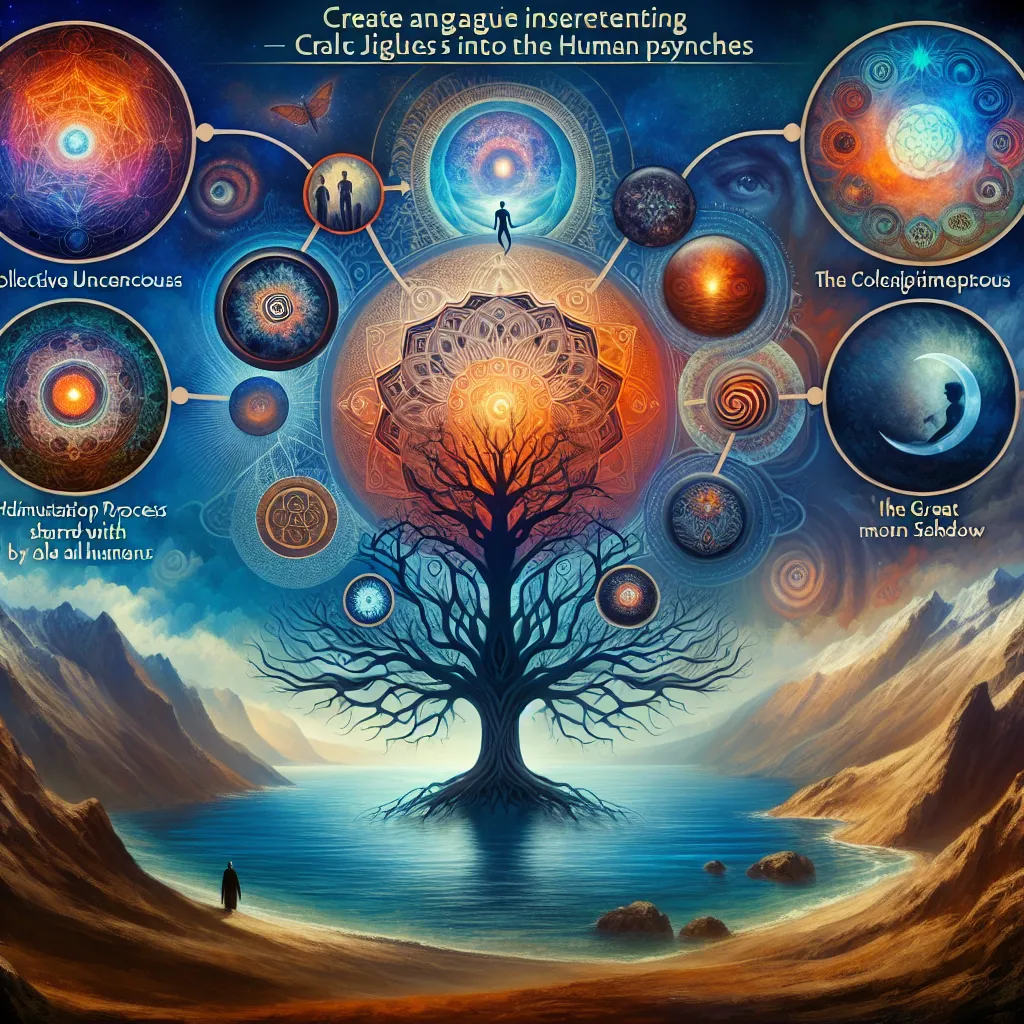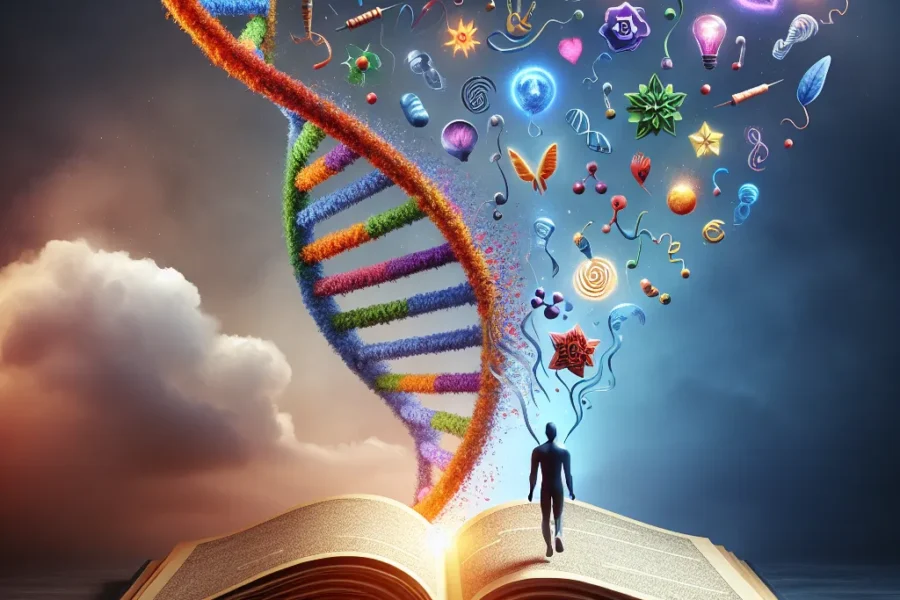Carl Gustav Jung remains one of the most influential figures in the field of psychology. His extensive work and theories about the psyche have shed light on the intricate complexities of the human mind, providing a roadmap for understanding our inner world. Jung’s contributions are profound and manifold, offering a diverse range of concepts that have been integrated into various disciplines, including psychology, psychotherapy, and even beyond, into literature and spirituality.
The psyche, according to Jung, is a complex system comprised of various components including the conscious mind, the personal unconscious, and the collective unconscious. One of Jung’s seminal concepts is the idea of archetypes—innate, universal prototypes for ideas and may be used to interpret observations. Archetypes reside within the collective unconscious and are manifest in various forms across different cultures and societies. The most notable archetypes include the Persona, the Shadow, the Anima and Animus, and the Self.
The Persona represents the social face or image one presents to the world. It’s a mask that adapts to various social situations, shaped by societal expectations. However, this outward identity is not the true self but rather a selective representation. Behind the Persona lies the Shadow, which houses the repressed, hidden aspects of our personality, including weaknesses, desires, and instincts that our conscious self does not acknowledge or chooses to suppress due to societal norms.
Jung also presented the concepts of Anima and Animus, which represent the feminine and masculine aspects of a person’s unconscious, respectively. According to Jung, every individual has both masculine and feminine components, regardless of their gender, which need to be balanced for wholesome psychological development. The integration of the Anima and Animus into consciousness is a central part of Jung’s process of individuation, an evolutionary process of the psyche that leads to the development of the Self.
The concept of the Self is perhaps the most significant of Jung’s theories. It symbolizes the unification of the conscious and unconscious parts of the psyche and represents the idea of psychological wholeness or self-realization. Individuation is featured as one’s lifelong journey towards achieving this self-realization; a process facilitated by understanding and integrating the various elements of the psyche.
Another cornerstone of Jung’s understanding of the psyche is the use of symbols. Jung believed that the psyche communicates with us through symbols, often revealed in dreams, which serve as messages from the unconscious, holding the keys to self-discovery and understanding. Through dream analysis and other techniques, such as active imagination, individuals can engage these symbols, bring them into consciousness, and glean insights that promote psychological growth.
Jungian psychology places significant emphasis on the psychological functions of thinking, feeling, sensation, and intuition. These opposites are part of the psyche’s regulation system and contribute to how we experience and interact with the world. Jung categorized these into functions and attitudes, such as extraversion and introversion, shaping different personality types. His psychological types theory has been adapted into various personality assessments, such as the Myers-Briggs Type Indicator (MBTI).
Synchronicity, another of Jung’s contributions, examines the meaningful coincidences that occur in life that cannot be explained by cause and effect, and that have significant personal meaning. This phenomenological approach underscores the connectedness of the psyche with the material world, supporting his hypothesis of the collective unconscious.
Jung’s exploration of Eastern philosophies and integration of their perspectives into Western thought represented a pioneering endeavor to bridge different worldview, thus amplifying the depth of his insights into the human condition. He examined concepts such as the I Ching and the Eastern understanding of the mind, drawing parallels to his ideas about synchronicity and the collective unconscious.
The therapeutic practice of Jungian psychoanalysis or analytical psychology is where Jung’s theories are perhaps most actively applied. This form of psychotherapy focuses on dialoguing with the unconscious, fostering personal growth, and alleviating psychic suffering. Techniques include dream analysis, active imagination, and working with transferential dynamics within the therapeutic relationship.
One cannot discuss the influence of Jung’s understanding of the psyche without considering his impact on the arts and literature. His theories have inspired novelists, playwrights, and filmmakers, providing a rich framework for character development and narrative structure. Artists often tap into the archetypal themes and collective narratives explored by Jung to resonate deeply with the human experience.
Furthermore, Jung’s ideas have found a place in the world of business and leadership. Understanding Jungian concepts such as personality types and archetypes can drastically improve communication, team dynamics, and management practices. Leaders who are versed in Jung’s theories can leverage this knowledge to foster healthier work environments and more effective organizational cultures.
His contributions to understanding the psyche also extend to education and lifelong learning. The way in which individuals are educated, the dimension of personal growth and development, and the recognition of innate psychological differences among children and adults in learning environments can all be informed by Jung’s principles. Educators who align with Jungian principles may provide more personalized learning experiences, emphasizing the importance of integrating all aspects of a person’s psyche in the learning process.
The impact of Jung’s theories is also visible in modern spirituality and New Age movements, where themes of self-realization, transcendence, and the exploration of the inner self align closely with his understanding of individuation and the collective unconscious. This has led to a broader appreciation of psychological health as intertwined with spiritual wellbeing.
In conclusion, Carl Jung’s multifaceted contributions to understanding the psyche have left an indelible mark on how we perceive the human mind. By providing a framework that incorporates the conscious and unconscious, the individual and the collective, and the analytic and the symbolic, Jung has equipped us with tools to delve deeper into the great mysteries of our inner selves. From therapy to literature, business, education, spirituality, and beyond, Jung’s insights continue to influence and inspire the exploration of the psyche, demonstrating that his work is as relevant today as it was during his time.
Jung’s legacy lives on as his concepts and theories remain foundational to psychological practice and understanding. His prolific contributions have paved the way for countless individuals to embark on the journey towards self-discovery and wholeness. Whether through the process of individuation, dream analysis, or the exploration of archetypes, Jung’s work offers a rich source for personal and societal transformation, championing the belief that within the complexities of the human psyche lie the seeds of growth, creativity, and profound understanding.



Leave a Comment